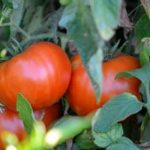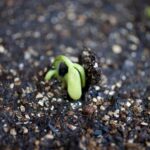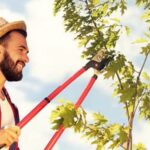Gardening with flowers and vegetables offers a unique and rewarding experience for any enthusiast. The combination of vibrant blooms and fresh produce creates a beautiful and functional outdoor space that provides numerous benefits. From enhancing the aesthetic appeal of your yard to enjoying the fruits of your labor, gardening with flowers and vegetables is a delightful pastime that promotes wellness and sustainability.
When it comes to selecting the perfect location for your garden, several factors come into play. Sunlight, soil quality, and available space are essential considerations for ensuring the success of your garden. By understanding these elements and their impact on plant growth, you can create an optimal environment for your flowers and vegetables to thrive.
In addition to choosing a suitable location, knowing which flowers and vegetables to grow together through companion planting is key to achieving a flourishing garden. Certain plants provide natural pest control, improve pollination, or enhance nutrient uptake for their companion species. By carefully planning your plant combinations, you can create an ecosystem within your garden that supports the health and growth of each species.
Selecting the Perfect Location for Your Garden
When it comes to gardening with flowers and vegetables, one of the most crucial factors for success is choosing the perfect location for your garden. Whether you’re a novice or an experienced gardener, understanding the importance of sunlight, soil, and space can make all the difference in the health and abundance of your plants.
First and foremost, consider sunlight. Most flowering plants and vegetables require at least 6-8 hours of direct sunlight per day. Take note of how the sun moves across your yard or outdoor space to determine the best location for your garden. South-facing areas typically receive the most sunlight throughout the day, making them ideal for plant growth.
Next, assess the soil quality in your chosen location. The soil should be well-draining and rich in organic matter to provide essential nutrients to your flowers and vegetables. You can conduct a simple soil test using a DIY kit or consult with a local agricultural extension office to determine the pH levels and composition of your soil.
Lastly, evaluate the available space for your garden. Consider not only the surface area but also vertical space if you plan on incorporating trellises or raised beds for climbing plants. Adequate spacing between plants is essential to prevent overcrowding and promote healthy growth.
By carefully considering these elements when selecting a location for your garden, you can create an optimal environment for gardening with flowers and vegetables that will yield beautiful blooms and delicious produce.
| Factor | Consideration |
|---|---|
| Sunlight | 6-8 hours of direct sunlight per day |
| Soil Quality | Well-draining and rich in organic matter |
| Space | Adequate surface area and vertical space for plants |
The Best Flowers and Vegetables to Grow Together
When it comes to gardening with flowers and vegetables, companion planting is a popular method that can benefit both your plants and your garden as a whole. By strategically choosing which flowers and vegetables to grow together, you can promote healthy growth, deter pests, and create a visually appealing garden landscape.
Choosing Complementary Plants
When selecting flowers and vegetables to grow together, it’s important to choose plants that complement each other. For example, growing marigolds alongside tomatoes can help repel harmful pests such as nematodes, while also adding a vibrant pop of color to your garden. Similarly, planting nasturtiums near cucumbers can protect the latter from pests like aphids and whiteflies.
The Benefits of Companion Planting
Companion planting offers numerous benefits for your garden. For one, it can help improve soil health by promoting biodiversity and reducing the risk of plant diseases. Additionally, certain combinations of flowers and vegetables can attract beneficial insects like bees and butterflies, which are essential for pollination. This not only supports the overall health of your garden but also contributes to the greater ecosystem.
Examples of Successful Pairings
Some popular examples of successful flower and vegetable pairings include planting dill near cabbage to ward off cabbage worms, pairing sunflowers with pole beans for structural support, and growing basil alongside tomatoes to improve flavor and deter pests. By understanding the unique properties of each plant and how they interact with one another, you can create a harmonious garden that thrives with minimal intervention.
Tips for Planning and Designing Your Flower and Vegetable Garden
When it comes to planning and designing a garden that includes both flowers and vegetables, there are some key tips to keep in mind to ensure a successful and harmonious growth of your plants. Here are some essential tips for planning and designing your flower and vegetable garden:
- Consider the layout: When planning your garden, think about the layout of your beds. Make sure to place taller plants where they won’t shade smaller ones and consider the needs of each plant in terms of sunlight exposure.
- Companion planting: Take advantage of companion planting by selecting flowers that can act as natural pest deterrents for your vegetables. Marigolds, for example, can help repel pests from tomatoes and other vegetables.
- Color coordination: Think about the color scheme of your garden. The vibrant hues of flowers can complement the green foliage of vegetables, creating an aesthetically pleasing display.
In addition to these tips, it’s important to also consider the design aspect of your garden. Creating a visually appealing layout can enhance the overall experience of gardening with flowers and vegetables. Utilize borders, pathways, and focal points to create interest and visual impact within your garden space.
Essential Tools and Equipment for Successful Gardening
Gardening with flowers and vegetables requires having the right tools and equipment on hand for successful cultivation. The following are essential tools you should have when tending to your garden:
- Garden Hoe: A versatile tool for breaking up soil, removing weeds, and shaping planting rows.
- Trowel: Useful for digging small holes for transplanting seedlings or bulbs.
- Garden Fork: Ideal for turning over soil, breaking up clumps, and mixing in compost or fertilizer.
Additionally, having watering cans, hoses with adjustable nozzles, pruning shears, gloves, and a wheelbarrow can greatly facilitate gardening tasks. Having these basic tools will make maintaining a healthy flower and vegetable garden much easier.
Remember that investing in quality tools may initially seem costly but will save time and effort in the long run. Proper maintenance of these tools is also crucial to ensure their longevity and effectiveness in keeping your garden flourishing throughout the growing season.
Essential Tools and Equipment for Successful Gardening
When it comes to gardening with flowers and vegetables, having the right tools and equipment is essential for success. The proper tools make tasks easier, more efficient, and can lead to a healthier garden overall. Some essential tools for gardening include a trowel, hand pruners, a rake, a shovel, and a watering can or hose. These will help you with planting, pruning, clearing debris, digging, and watering your garden.
In addition to basic tools, there are other pieces of equipment that can be beneficial for gardening with flowers and vegetables. For example, a garden cart or wheelbarrow can make transporting heavy items or large amounts of soil easier. A sturdy pair of gardening gloves will protect your hands from thorns, cuts, and blisters. It is also important to invest in quality seeds or seedlings for your plants.
Furthermore, consider investing in some form of pest control to protect your plants from insects and animals that might harm them. Depending on the size of your garden and the specific pests in your area, this could include insecticides or natural predator support systems such as ladybug release kits. Having these essential tools and equipment will help ensure that your flower and vegetable garden thrives throughout the growing season.
| Essential Tools | Equipment |
|---|---|
| trowel | garden cart or wheelbarrow |
| hand pruners | gardening gloves |
| rake | pest control measures |
Watering, Weeding, and Pest Control
Maintaining a healthy garden involves more than just planting and harvesting. It requires constant care and attention to ensure that your flowers and vegetables thrive. Here are some essential tips for watering, weeding, and pest control to keep your garden in top shape:
- Watering: Proper watering is essential for the health of your garden. Most flowers and vegetables require about an inch of water per week, either from rainfall or manual watering. Be sure to water deeply, as shallow watering can result in weak root systems. Consider investing in a soaker hose or drip irrigation system to ensure even watering.
- Weeding: Weeds can quickly take over a garden if not kept in check. Regularly inspect your garden for weeds and remove them promptly. This will prevent competition for nutrients and sunlight, allowing your flowers and vegetables to flourish.
- Pest Control: Pests can wreak havoc on a garden if left unchecked. Consider using natural methods such as introducing beneficial insects, companion planting, or using organic pest control products. Regular inspection of your plants will help you identify any pest problems early on.
Proper maintenance of a flower and vegetable garden also includes keeping an eye out for signs of disease or nutrient deficiencies in plants. These issues can impact the overall health of your garden and should be addressed promptly.
Remember that consistent care is key to maintaining a healthy garden with flourishing flowers and abundant vegetables. With proper watering, diligent weeding, and proactive pest control measures, you can enjoy a bountiful harvest from your garden throughout the growing season.
So always remember that gardening with flowers and vegetables is not just about planting them but also taking good care of them for healthy growth and production.
Harvesting and Enjoying the Fruits of Your Labor
Now that you have put in the hard work and dedication to your garden, it’s time to reap the rewards of your labor. Harvesting fresh flowers and homegrown veggies is one of the most satisfying parts of gardening with flowers and vegetables. Not only do you get to enjoy the beauty of your blooms, but you also get to savor the delicious flavors of your homegrown produce.
Harvesting Flowers
When it comes to harvesting flowers from your garden, timing is key. Different types of flowers have different optimal times for harvesting. It’s important to wait until the blooms are fully open before cutting them, as this will ensure a longer vase life. Once you’ve harvested your flowers, be sure to immediately place them in water and keep them in a cool location to prolong their freshness.
Harvesting Veggies
When it comes to harvesting vegetables from your garden, it’s important to pick them at their peak ripeness for the best flavor and nutritional value. Different vegetables have different indicators for when they are ready to be harvested, such as size, color, or texture. Be sure to handle them with care when picking and store them properly after harvesting.
In addition to enjoying the fruits of your labor at home, you may also consider sharing your fresh flowers and homegrown veggies with friends, neighbors, or local community organizations. By spreading joy through sharing your bountiful harvests, you’ll not only bring happiness to others but also further spread the love for gardening with flowers and vegetables.
Troubleshooting Common Issues
One common issue that gardeners often face is the presence of pests and diseases in their flower and vegetable gardens. Pests like aphids, snails, and caterpillars can wreak havoc on your plants, while diseases such as powdery mildew and blight can quickly spread and damage your crops. To tackle these challenges, it’s important to regularly inspect your garden for any signs of infestation or disease.
Implementing integrated pest management techniques, such as using natural predators or organic pesticides, can help keep pest populations under control. Additionally, practicing good garden hygiene by removing any infected plant material can prevent the spread of disease.
Another challenge that many gardeners encounter is poor soil quality, which can negatively impact the growth and productivity of plants. Conducting a soil test to determine its pH level and nutrient content is a great way to identify any deficiencies that need to be addressed. Adding organic matter like compost or aged manure can help improve soil structure and fertility, providing a healthy environment for your flowers and vegetables to thrive.
Furthermore, adverse weather conditions like extreme heat or heavy rainfall can also pose challenges for gardeners. In order to mitigate these issues, consider implementing protective measures such as shading plants during heatwaves or providing adequate drainage to prevent waterlogged soil. It’s also important to select plant varieties that are well-suited to the climate in your area to ensure their resilience against these environmental stressors.
By being proactive in addressing common gardening issues like pests, diseases, soil quality, and weather conditions, you can create a resilient and thriving garden that yields beautiful flowers and bountiful vegetables. With patience, dedication, and the right strategies in place, you’ll be able to overcome these challenges and enjoy the rewards of successful gardening with flowers and vegetables.
Conclusion
In conclusion, gardening with flowers and vegetables is a fulfilling and rewarding experience that offers a myriad of benefits. Not only does it allow you to cultivate beautiful blooms and fresh produce, but it also provides therapeutic and stress-relieving qualities. By embracing the practice of companion planting and selecting the ideal location for your garden, you can create a harmonious and thriving space that enhances the beauty of your outdoor environment.
As you embark on your gardening journey, remember to carefully plan and design your flower and vegetable garden to maximize its potential. Utilize essential tools and equipment to ensure successful growth, and be diligent in watering, weeding, and pest control to maintain a healthy garden. By taking these measures into account, you can effectively troubleshoot common issues that may arise, ultimately leading to a bountiful harvest.
Ultimately, gardening with flowers and vegetables is a labor of love that offers endless satisfaction. Whether you are admiring the vibrant colors of blooming flowers or indulging in the delicious flavors of homegrown veggies, the joy derived from tending to and reaping the rewards of your garden is immeasurable. So go ahead, roll up your sleeves, get your hands dirty, and embrace the joy of gardening with flowers and vegetables-it’s an experience like no other.
Frequently Asked Questions
Can You Have a Flower and Vegetable Garden Together?
Yes, you can have a flower and vegetable garden together. In fact, it’s a great way to maximize your garden space and create a visually appealing and productive garden. Just make sure to plan the layout carefully to ensure each plant has the proper space and nutrients.
What Flowers Should Not Be Planted With Vegetables?
Certain flowers should not be planted with vegetables due to potential negative interactions. For example, tall or bushy flowers like sunflowers or marigolds can shade out smaller vegetables, while plants like chrysanthemums may produce chemicals that inhibit the growth of nearby vegetables.
What Vegetables Look Good in Flower Beds?
There are several vegetables that look good in flower beds, adding both color and texture to the garden. For instance, rainbow chard has vibrant stems and leaves that can add a pop of color to any flower bed. Additionally, ornamental peppers are both beautiful and edible, making them a unique addition to any mixed planting bed.

If you’re looking to get into vegetable gardening, or are just looking for some tips on how to make your current garden better, then you’ve come to the right place! My name is Ethel and I have been gardening for years. In this blog, I’m going to share with you some of my best tips on how to create a successful vegetable garden.





